#Christian Lopes
Explore tagged Tumblr posts
Text
There have been some interesting bits of Sonic-related news lately! This is the post where I comment on them.
youtube
Sonic Superstars
Finally! A new Sonic sidescroller! It's been too long.
Admittedly, in a perfect world, I would've wanted a Sonic Mania 2, but I'll take a 2.5D game with all new zones for sure, especially when the art direction for it looks this nice. And four-player co-op with Sonic, Tails, Knuckles AND Amy playable? Hell yeah. Also Fang is back, and there's a new funny little guy designed by Naoto Ohshima! Wow!
There's been some concern over how this will play, particularly after it was discovered it's being co-developed by Ohshima's company Arzest. They're perhaps best known for some mediocre Nintendo games like Yoshi's New Island, Hey! Pikmin, and the 3DS version of Mario & Sonic 2016, as well as, of course... co-production on Balan Wonderworld. The thing is, Arzest is very much one of those "silent collaborator" type companies. They're hired gun developers who do the grunt work on projects for other studios without being put in the spotlight. The quality of their games isn't really up to Arzest, who are presumably just doing whatever they're directed to do with whatever resources they're allotted. It's up to their publishers.
Based on the side-by-side physics comparisons that have been going around Twitter, it seems clear that SOMEONE on this project is invested in making Superstars play just like the classic games. I'm admittedly no Sonic physics purist, but the extended gameplay footage (with placeholder music from Sonic 4 Episode 2) looks spot on to me. Christian Whitehead also seems to know things about the game, stating that "the Mania physics were indeed fully translated to modern 3D." It seems that at the very least they consulted his previous work on this, regardless of whether or not he's actually involved.
But even if this ends up not being true, honestly, I'll take a new Sonic sidescroller that's "just okay" if it has all new zones, nice art direction, and good music. If Sonic 4 had checked those three boxes but played exactly the same, I would've been way more into it.
youtube
Really, it's the music that has me most concerned. Obviously we all love Jun Senoue, but hearing he's trying to do "classic-style" music again makes me worry that he's gonna bust out the fake Genesis synths. I'm actually a weirdo who likes the Classic Sonic stage themes in Forces, but those weren't by Senoue, whose otherwise very strong compositions were really hurt by the sound palette chosen for Sonic 4. Like many others, I'd prefer it if Superstars went for the new jack swing sound of Sonic Mania - and considering Tee Lopes is contributing, hopefully he's allowed to tap into that sound a little. But I'd be open to other styles, too. I just really don't think a game with HD visuals should be going for a fake 16-bit sound.
But yeah, overall, I'm looking forward to Superstars. I think we've needed something like this for a long time, and I'm glad they're finally doing it.

Sega union update
We don't have many details on this, but the newly forming Sega of America union, AEGIS-CWA, is facing resistance from management. Apparently some form of "anti-union campaign" (their wording) is underway, also described more worryingly as "relentless attempts at union busting." We unfortunately don't have more details right now, and it seems like no news outlets are doing anything with this story.
This behavior is unfortunately not surprising, even from a company that purports progressive values like Sega. Remember kids: corporations are not your friends.
In the face of this, the members of AEGIS-CWA are still trying to convince management to stay neutral with the help of their fan petition that raised over 4300 signatures. At the time of writing this, their first union election is also underway. I continue to wish them luck in their efforts. We're currently seeing a wave of unionization attempts the likes of which we've never seen before, and I have to hope that at least some of them stick. We need real change in the game industry, an industry where if you're able to stick around longer than ten years without burning out then you're one of the lucky ones.
Okay now time for the thing y'all really wanted me to comment on
Penders says he's leaving Twitter
Earlier this month, Penders announced: "Since Twitter is promoting anti-trans nonsense, I can’t in good conscience continue to be associated with it much longer."
He's certainly not wrong. Elon's been doubling down on his transphobic fearmongering, and Twitter's already weak moderation of hate speech has only gotten even weaker. (They quietly removed their rule against intentional misgendering in April.) But based on the date he tweeted this, I assume Ken was referring specifically to Elon promoting Matt Walsh's shit ass transphobic documentary, which Elon personally allowed to be hosted on Twitter in its entirety. I'd quit the site myself if it didn't feel necessary to promote my work and stay connected with my peers. (Both the furry community and the gamedev sphere are very much centered on Twitter.) Assuming Ken does actually leave in protest, hey, good on him.
There's been some surprise over the fact that he's apparently a trans ally, but for all his many flaws, Penders has always been your average baby boomer Democrat. Half his tweets are about hoping Trump goes to jail. He has many outdated views that he refuses to unpack (I am not going to devolve this post into a catalog of stupid shit he's tweeted), but he at least understands that "progressive" is a thing you should try to be. He's that uncle who you wouldn't go to for a nuanced view on queer identity, but like, he knows trans people exist and are discriminated against and that that's bad.
Of course, instead of just leaving Twitter, he's announced that he intends to leave by September 30th, after which point people will have to contact him via his website. The idea of someone scheduling a date four months in the future on which they're going to leave a social media platform in protest is very, very funny to me. I wonder if he has something planned for September that needs to happen first - like, you know, maybe finally releasing at least a portion of The Lara-Su Chronicles?
Lord knows when the hell we'll be able to read the first part of the comic, but in the near future you WILL be able to buy THIS on a t-shirt!

Wait did he change that one character from Anthony Mackie to Ernie Hudson???

Anyway, my one hope is just that even if he does leave Twitter, he doesn't delete his account. His tweets have long been one of my most important sources for behind the scenes info on Archie Sonic, even if you do have to take some of it with a grain of salt. Gallagher and Bollers are simply not going on Twitter and talking about this stuff on a regular basis like Ken does. With so many old forums and fan sites now gone, only partially preserved by the Wayback Machine, Ken deleting his Twitter would truly be the burning of the library of Alexandria for old Archie Sonic behind the scenes drama.
You know, assuming he actually does leave Twitter.
...
Aaaand that about does it for Sonic-related news lately, I think? Okay, back to my hiatus. I would still like to get back to updating sometime this year, but I'm still in recovery mode following SLARPG's launch, so I can't promise when that'll be. I appreciate everyone's continued patience!
174 notes
·
View notes
Text
Clinic Stars — Only Hinting (Kranky)

Photo by Ivan Fucich
youtube
When you listen to the debut album from Detroit duo Clinic Stars, it’s not surprising that one of the tags on its Bandcamp page is “shoegaze” (not least because the genre is having a bit of a moment). But it does feel like a slightly ill-fitting label. Yes, Only Hinting has plenty in common with shoegaze both sonically and emotionally, but even when the guitars do get a little noisier (particularly on the Flying Saucer Attack-esque intro to “I Am the Dancer”) it never quite hits that submerging, jet engine roar often taken as characteristic of the sound. It makes this album a fascinating counterpoint to all of the acts marrying those kinds of sonic washes with more overtly aggressive forms (heavy metal and stoner rock in particular). Instead, Clinic Stars most overlap with shoegaze in its quietest, most reticent forms, shading over into more ambient and dream pop territories.
Going back to “I Am the Dancer,” after about 90 seconds of that compellingly directionless static squall, the harsh cloud gradually lifts to make way for… well, still a haze, but a lighter one, with acoustic strumming, a surprisingly gentle drum beat, and Giovanna Lenski’s hypnotically whispery vocals. The longest song here, it’s given plenty of time to deepen its spell, the title looped over other vocal snippets and that gorgeous backing. It’s almost too clear to be shoegaze, even if it hits that sweet spot of melody and enveloping sound right on. Lenski and Christian Molik maintain an uncanny calm throughout, and the result feels almost supernatural.
It’s a highlight of the more immediately ingratiating first side of Only Hinting, which begins with the brief “Kissing Through the Veil” setting the tone with lilting, diffuse melodies. A track like “Remain” both has a refrain you might catch yourself humming and keeps itself at a mysterious distance, feeling like it’s loping out of and then retreating back into the trees as it goes. The B side is no less compelling but even gauzier, with the likes of the gracefully fading “Shiver (Walking Over Time)” and the closing fog of “Thoughtless” feeling less like songs than atmospheres. If the gold standard for ambient music is still Eno’s dictum that it be “able to accommodate many levels of listening attention without enforcing one in particular,” this is a shining example of the form.
Clinic Stars have been putting out EPs since 2021 and been working on this LP since 2022; listening to it, that length makes sense. This is patient, intensely layered and considered music, even if all of that is in service of it having tremendous sonic and emotional impact. And as good as the first side is (both the title track and “I Am the Dancer” are among the better songs of their type you’ll find this year), it’s that second half that might be even more exciting when considering the duo’s future. Managing that tricky balance of the abstract and visceral is a rare talent, and Only Hinting demonstrates that they have a knack for it. Shoegaze, ambient, dream pop; when it’s made at this level, you just want more of it.
Ian Mathers
#clinic stars#only hinting#kranky#ian mathers#albumreview#dusted magazine#shoegaze#dream pop#ambient#slowcore
11 notes
·
View notes
Text
twice as many stars
summary: Sir Sparklepuff has thirty days to live. (He doesn’t know it, yet.)
a/n: i took sir sparklepuff and his existential horror story of a life far too seriously and cried. i hope you will too. also TWs for abusive relationships (hi Aaravos), dubious morality, character death, some on page violence, and elements of Christian religious trauma. :))
word count: 8.7k
Tomorrow when the farm boys find this freak of nature, they will wrap his body in newspaper and carry him to the museum.
But tonight he is alive and in the north field with his mother. It is a perfect summer evening: the moon rising over the orchard, the wind in the grass. And as he stares into the sky, there are twice as many stars as usual. —Two Headed Calf by Laura Gilpin -------------------------------------------------------------------------------
Sir Sparklepuff has thirty days to live.
(He doesn’t know it, yet.)
Or technically, he has twenty-nine, but he can’t count. His fingers are too long and too few to count, his eyes too busy blinking and taking in the wonder of the fascinating world around him with all his large, yellow rimmed gaze of possibility.
There are three creatures like him, one in black on her knees, one crouched by her in white, and one with something akin to his antenna atop a green head, and what can only be described as purpose-purpose-purpose tugs in his chest. Sir Sparklepuff twitches forward, standing and then loping forward on all preferable fours.
His mind is a scrambled synapses of information and snatches at sentience, and the world is so very big and wide and bright.
It is, he thinks, a deeper voice within his mind supplying the proper word, beautiful.
He hopes he will get to enjoy it.
read the rest on AO3
#tdp#the dragon prince#tdp claudia#tdp aaravos#sir sparklepuff#fic: twice as many stars#tdp fic#my fic#fic#sparklepuff squad#arc 2#post season four#canon divergence#a thousand times which isn't half enough#just bc viren is Awake in this version of s5 and the trailer made it clear he largely won't be RIP
101 notes
·
View notes
Note
Do you have any favourite (PT) paintings?
Yes several

Cinco Artistas em Sintra (five artists in Sintra), João Cristino da Silva. Notice Pena in the far left corner, before the forest of Sintra was planted.
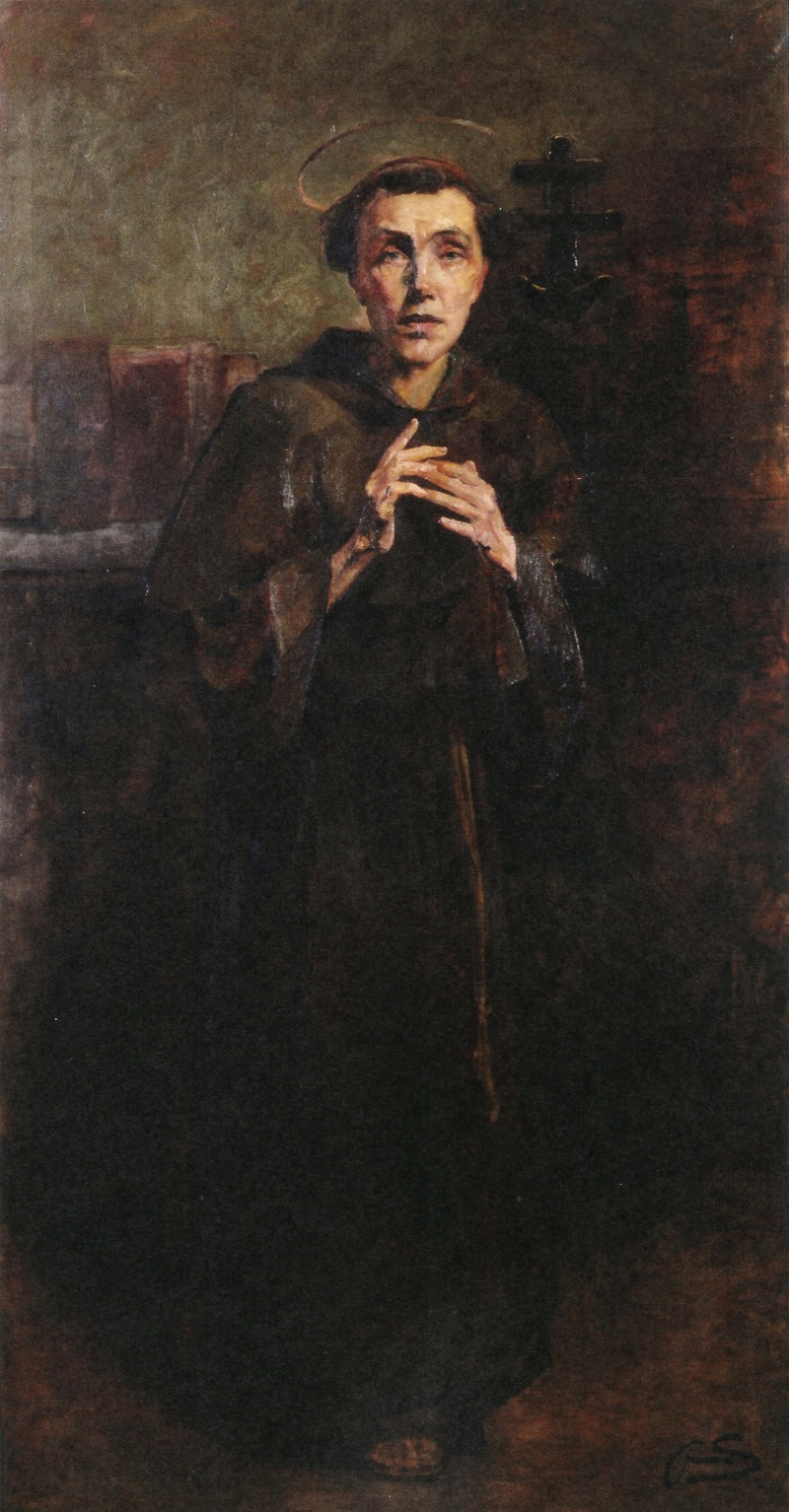

Santo António (Saint Anthony, above) and Auto Retrato (Self Portrait, below) by Aurélia de Souza


Celebrando o São Martinho (Celebrating Saint Martin, or the Drunkards, above) and Concerto de Amadores (Amateur Concert, below) by Columbano Bordalo Pinheiro (the second one is impressive to see live)

A Blusa Azul (the blue shirt), Adriano de Sousa Lopes

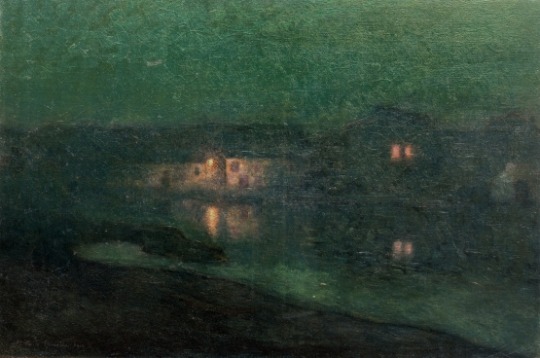
A Vida (Life) and Nocturno (nocturne), António Carneiro. First one is a massive triptych

Colheita - Ceifeiras (Lumiar) (harvest - reapers), de Silva Porto
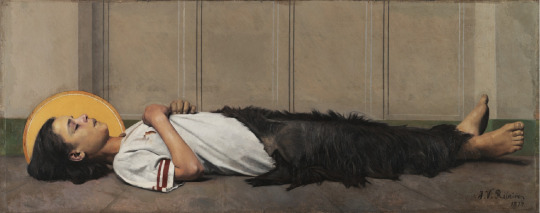
One of my absolute favourites, I cannot describe the impact this painting had on me when I first saw it live. Mártir Cristão (Christian Martyr), by Joaquim Vitorino Ribeiro


As Promessas (Promises, above) and Leonor de Viseu (Leonor of Viseu, below), by José Malhoa

Nu (nude), Eduardo Viana

À Espera dos Barcos (waiting for fishingboats), Marques de Oliveira

Coty, Amadeu de Souza Cardoso, literally one of my favourite paintings in the entire world

Barco Desaparecido (missing ship), Sousa Pinto. You can tell I'm a slut for Realism by now, I hope
Just the ones at the top of my head tbh
65 notes
·
View notes
Text
But Don Quixote’s names and actions hide a much bigger secret. Following Todorov, there is a double movement toward and away from the revelation. In the end, all that can be said is that the play of genre and narrative may point to a specific hidden mystery, one that deals with a clash of civilizations and the anxieties it causes the protagonist. This secret both complements and contrasts with the vision of a knight as a ghostly Charles V. Don Quixote as a new Charles is deprived of all power except that of the imagination as he rides through the genres. He personifies an emperor who upon abdication has become ‘the ghost of all power.’ While the emperor repeatedly walks the halls of the monastery thinking of his past achievements and hollow present, the knight rides through an impoverished Spain, seeking the power that Charles discarded, only to find visions less substantial than his emaciated body. It may be that his haunting is there to warn those who sympathize with the knight that the imperial pursuits of the narrative are flawed, that the secret must be revealed. Indeed, the narrative is filled with ghosts that haunt the text and the knight. We may recall that Derrida has fostered the study of what he calls ‘hauntology’ (1994, 10). I will use the ghostly in a different manner, seeking to glimpse at the mysteries that hide between worlds and between genres. In a sense, this study comes closer to Todorov’s view of the ghosts in Henry James, who are interpreted as part of the secret of narrative. While no one (except Sancho) really believes in Don Quixote’s ghosts, he does, creating a kind of hesitation in the novel that points to Todorov’s notion of the fantastic. But the ghosts in the novel are there to point to an absence, to that which is missing and cannot be fully recaptured: ‘the core of a story will often be an absence . . . and its quest will be the only possible presence’ (1977, 184). Although we are delighted by the permutations of Don Quixote’s quest, and we may even laugh at the ghostly appearances in the novel, there are secrets here that defy disclosure. As Todorov argues: ‘In order for this ever-absent cause to become present, it must be a ghost’ (1977, 154). Don Quixote is surrounded by the absent, by ghosts, as he unwittingly conceals the secrets of the narrative. But the novel makes his exploits even more mysterious. If Don Quixote stands for a ghostly Charles V, then what we have is a near impossibility – a ghost that is being haunted by other ghosts.
[…] Ghosts also have another important use: to whisper a secret from the past, an awful event that returns them to a world now alien to them. Two examples will suffice: Hamlet’s ghost comes to warn the prince of a terrible secret. We may read of a haunting similar to Shakespeare’s in a play ascribed to Lope de Vega, Dineros son calidad. These hollow beings impel the living to action. And this is precisely what happens in Don Quixote, although the ghosts’ whispers are never heard. Throughout part 1, we hear incessantly about ghosts. In chapter 17 the goings-on at the inn are attributes to Moorish ghosts; in chapter 19 a funeral procession in the night seems like a ghostly apparition; and in chapter 20 a clanging of chains make both Sancho and Don Quixote think they are in a ghost story. These ghosts that haunt Don Quixote could well be visions created by the excess of melancholy. Although this partially explains his imaginings, it says nothing of the secret they have come to reveal. This is the mystery that will never be told, preserving the essential absence as key to the text. At the same time, it is possible to build a theory overlaying absence; it is possible to trace the figures on the carpet, the whispers of the ghosts. These ghosts that pursue the ghostly knight are also ghosts of a Christian empire that seeks to subject and exorcise the other.
Frederick A. de Armas, 'Pillars of Genre, Ghosts of Empire: An Introduction,' from Don Quixote Among the Saracens: A Clash of Civilisations and Literary Genres
24 notes
·
View notes
Text
By: Andrew Doyle
Published: May 16, 2024
In his memoir Hitch-22, Christopher Hitchens considered “why it is that anti-Semitism is so tenacious and so protean and so enduring”. Many of us in the west have grown complacent, assuming that the horrors of the Holocaust would prevent this ancient prejudice from re-emerging. But as the conflict between Israel and Hamas escalates, few of us can be in any doubt that antisemitism has once again goose-stepped into the spotlight.
Of course, criticism of the Israeli government and its military strategy is entirely legitimate. So too is our profound concern for the innocents of Gaza and the many thousands of non-combatants who are losing their lives. But there is no denying the explicit anti-Jewish hatred that has accompanied these discussions in certain quarters. Criticise Israel all you like, but don’t try to tell me that Monday night’s daubing of the Shoah memorial in Paris with handprints of red paint was anything other than antisemitic.
Social media has opened our eyes to the prevalence of such sentiments. The other day I posted a link to my Substack piece about the Eurovision Song Contest on that hellsite now known as X. My focus in the article was on the narcissism of the “non-binary” performers, but one feminist activist decided to make it all about Israel. Underneath my post, she added an image of Eden Golan, the Israeli entry to the competition, with bloodstains photoshopped onto her dress. She went on to dismiss the victims of the October 7 pogrom as “silly ravers” and to blame the massacre on the IDF. Whatever else one might say about such views, it is clearly evidence of a complete absence of basic humanity.

This is sadly not uncommon. Recently we have seen protesters openly supporting Hamas, or even praising its acts of barbarism. A new poll has found that 63% of students currently protesting at US universities have at least some sympathy for Hamas. There have been overtly antisemitic statements, and Jews have been harassed on campus. It has been reported that at Columbia University, one protester cried out “We are Hamas” while another shouted at a group of Jewish students: “The 7 October is about to be every fucking day for you. You ready?” These are the very people who have spent the last few years calling anyone who dissents even slightly from their worldview a “fascist”, and yet they are blind to actual fascism when it emerges within their own ranks.
All of this has taken me by surprise, which perhaps reveals the extent of my naivety. Antisemitism is nothing new, and has assumed myriad and outlandish forms over the centuries. Our own country has not been immune; Jews were deported from England in 1290, only to be readmitted in 1656. Before then, only those who had converted to Christianity were allowed to remain; specially, they were able to reside at the Domus Conversorum in London, established by Henry III in 1232. Anti-Jewish sentiments were reignited by a plot to poison Elizabeth I in 1594, which was blamed on her physician Roderigo Lopes, a Portuguese man of Jewish ancestry who was executed for treason. This is the context in which the forced conversion of Shylock at the end of Shakespeare’s The Merchant of Venice ought to be understood.
Unpleasant myths about Jews have abounded throughout history, some of which still linger in Islamic regimes and the darker crannies of the internet where neo-Nazis gather to wallow in their bile. The poisoning of wells by Jews was thought to have initiated the Black Death epidemic in 1348. This notion was still pervasive by the time Christopher Marlowe wrote his play The Jew of Malta in 1589 (consider Barabas’s mass extermination of an entire convent of nuns by means of “a precious powder”, or his boastful claim: “Sometimes I go about and poison wells”).
The hate-filled fantasies didn’t end there. The seventeenth-century preacher Thomas Calvert speculated that male Jews menstruated and murdered Christian infants to replenish their blood. In a 1656 pamphlet addressing the question of readmission, the puritan polemicist William Prynne stated that “Jews almost every year crucify one child, to the injury and contumely of Jesus”.
Those who have been paying attention will have noticed new forms of these blood libels recurring online in recent months, with many activists claiming that Israel is specifically targeting children in the conflict. For whatever reason, many opponents of the war cannot resist veering into antisemitic tropes. Most examples are coming from those who identify as “left-wing” and “progressive”, which just goes to show how antisemitism is not specific to any one political mindset. Its tendency to rematerialise in unexpected guises means that we ought to be eternally vigilant. I had never been able to grasp how Holocaust denial could be so widespread in the face of such unequivocal evidence. But having heard so many denials of the October 7 massacre, including scepticism from prominent left-wing commentators over whether rapes actually took place, I can see that such revisionism is more common than I assumed.
The unique horror of the Holocaust shows us that human civilisation might at any point collapse into the abyss. In Anthony Burgess’s novel Earthly Powers, the narrator Ken Toomey witnesses the immediate aftermath at Buchenwald, what he describes at the “lowest point in human history”. His newfound sense of humankind’s capacity for evil leads him to conclude that we cannot possibly have been created by God. This is the essence of despair.
The novelist Mervyn Peake was one of the first to see Bergen-Belsen after its liberation by allied forces. He visited the camp in the role of a war artist, and what he saw there haunted him forever. His final novel Titus Alone is a fragmentary and bleak affair, a consequence partly of his degenerative illness, but also of his psychological need to reckon with the evil he had glimpsed. It appears in the novel in the form of the “factory”, a chilling place of shadows and death, where identical faces stare out of countless windows and macabre scientific experiments are conducted within its walls.
One of Peake’s sketches from Belsen depicts a young girl, looking directly at the artist as she lies dying from consumption.

As he drew the girl, Peake was overwhelmed with a sense of helplessness and self-reproach. In the final stanza of his poem “The Consumptive. Belsen, 1945”, he tried to make sense of his feelings:
Her agony slides through me: am I glass That grief can find no grip Save for a moment when the quivering lip And the coughing weaker than the broken wing That, fluttering, shakes the life from a small bird Caught me as in a nightmare? Nightmares pass; The image blurs and the quick razor-edge Of anger dulls, and pity dulls. O God, That grief so glibly slides! The little badge On either cheek was gathered from her blood: Those coughs were her last words. They had no weight Save that through them was made articulate Earth’s desolation on the alien bed. Though I be glass, it shall not be betrayed, That last weak cough of her small, trembling head.
As Peake sketches the girl he struggles with the sheer futility of it all. He is troubled that his pity is fleeting, that even in the moment he is too focused on his task and not on the human being who lies dying before him. But is this really a lack of empathy, or a natural human reaction to the knowledge that there is nothing he can do to remedy the cruelties of the world?
The evil of the Holocaust serves as a reminder of what can happen when fascism prevails. We cannot afford to be complacent while antisemitism is on the rise and supposed progressives are cheering on those who openly wish to eliminate an entire race of people. If nothing else, we should do our utmost to ensure that the lessons of history are not forgotten.
#Andrew Doyle#antisemitism#Holocaust#The Holocaust#blood libel#israel#pro hamas#hamas supporters#terrorism supporters#pro palestine#palestine#religion is a mental illness
14 notes
·
View notes
Text

The New Look, TV Series, AppleTV+
This emotionally thrilling series reveals the shocking story of how fashion icon Christian Dior (Ben Mendelsohn) and his contemporaries, including Coco Chanel (Juliette Binoche), Pierre Balmain (Thomas Poitevin), Lucien Lelong (John Malkovich) and Cristóbal Balenciaga (Nuno Lopes), navigated the horrors of World War II and launched modern fashion.
#the new look#tv-series#tv series#apple tv series#2024#coco chanel#christian dior#dior#chanel#pierre balmain#balmain#Cristóbal Balenciaga#balenciaga#Ben Mendelsohn#John Malkovich#Lucien lelong#Juliette Binoche#Thomas Poitevin#appletv+
9 notes
·
View notes
Text

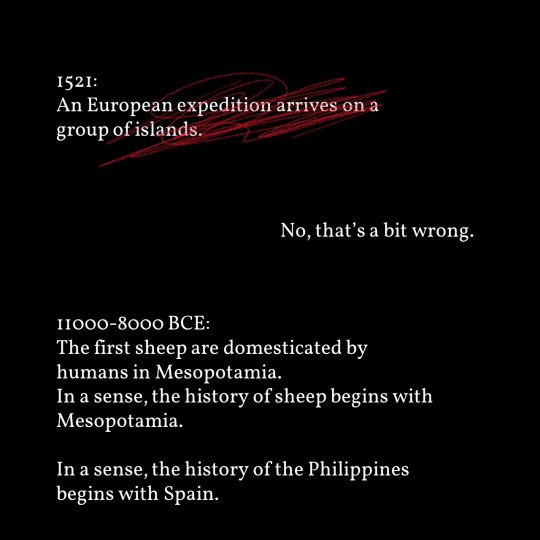
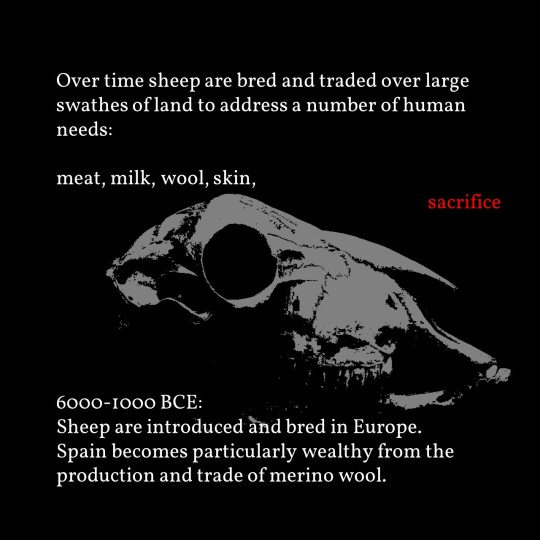
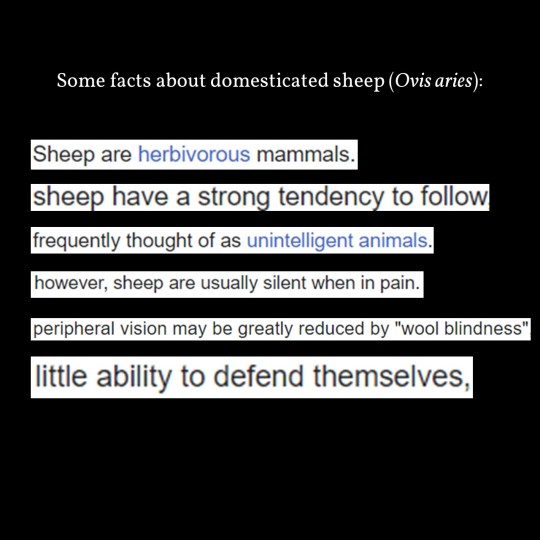
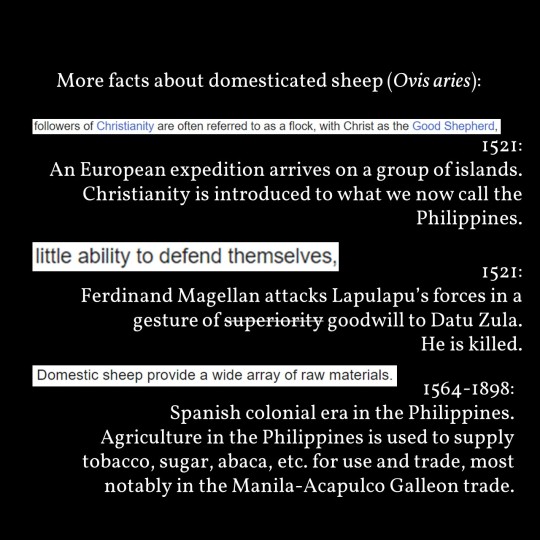
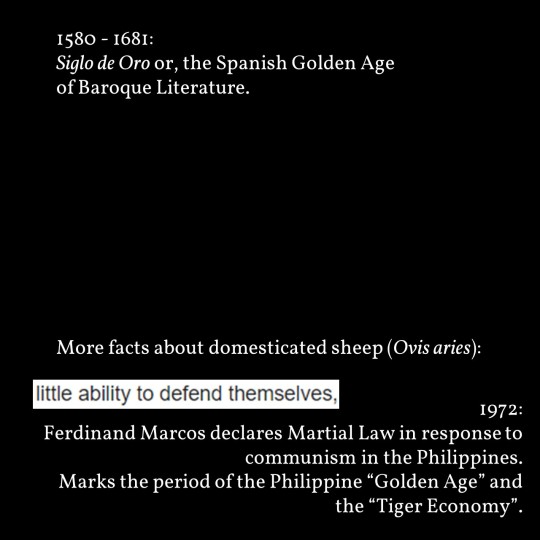
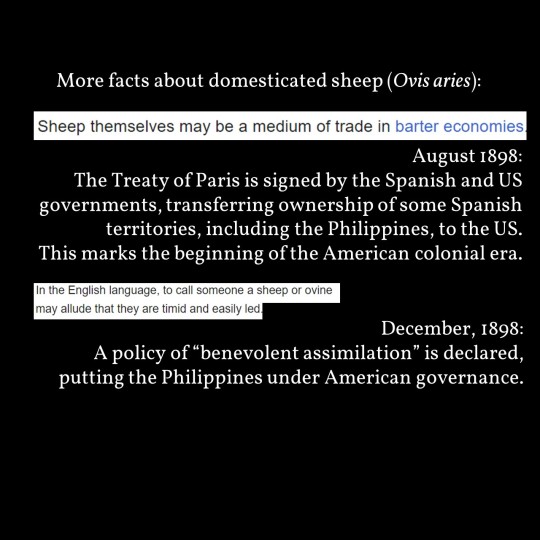
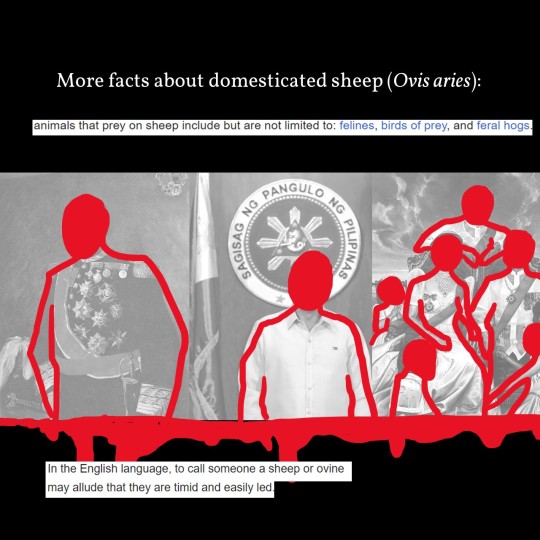


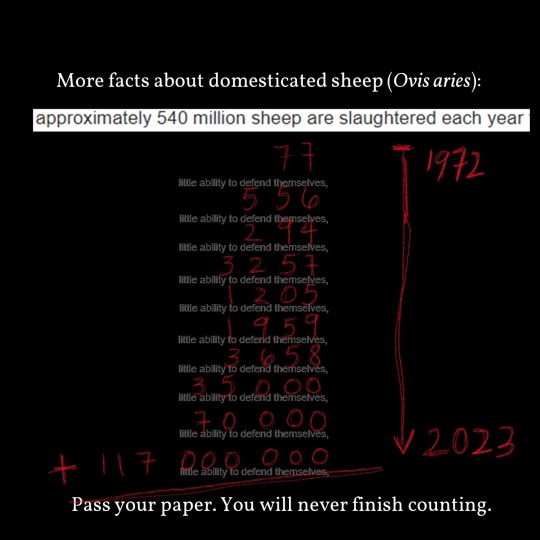
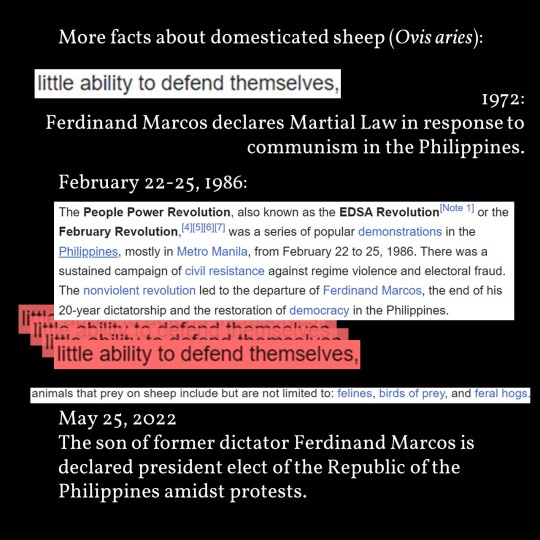

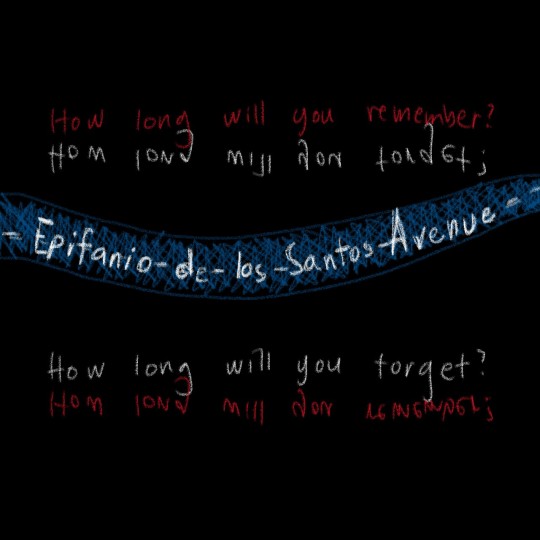
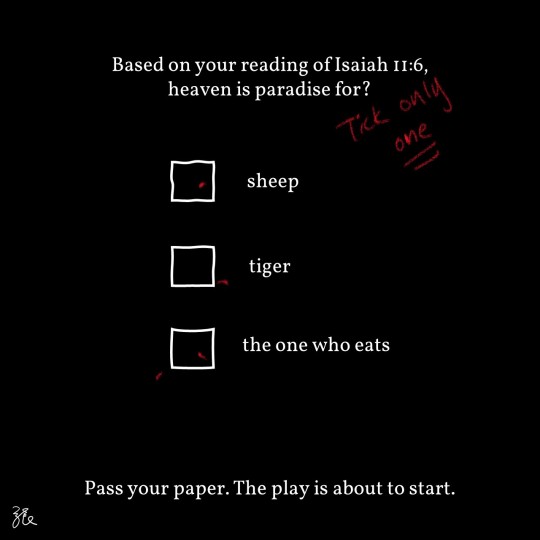
Sheep Eating Tigers: reflections on EDSA and Fuenteovejuna
[ID: a 15 page comic.
Page 1: Sheep Eating Tigers: reflections on EDSA and Fuenteovejuna. 02.25.2023, ika-37 na anibersaryo ng People Power Revolution. The words are in circular form, with illustrations of wounded sheep licking at blood and a tiger with its intestines out surrounding the text. A spiral serves as the backdrop. Several newspapers detailing the EDSA revolution are placed on the bottom of the image.
Page 2: 1521: An European expedition arrives on a group of islands. (This line is crossed out) No that's a bit wrong. 11000-8000 BCE: The first sheep are domesticated by humans in Mesopotamia. In a sense, the history of sheep begins with Mesopotamia. In a sense, the history of the Philippines begins with Spain.
Page 3: Over time sheep are bred and traded over large swathes of land to address a number of human needs: meat, milk, wool, skin, sacrifice. (A sheep skull is in the background) 6000-1000 BCE: Sheep are introduced and bred in Europe. Spain becomes particularly wealthy from the production and trade of merino wool.
Page 4: Some facts about domesticated sheep (Ovis aries): (what follows are screenshots from Wikipedia) Sheep are herbivorous animals sheep have a strong tendency to follow frequently thought of as unintelligent animals however, sheep are usually silent in pain peripheral vision may be greatly reduced by "wool blindness" little ability to defend themselves
Page 5: The image is text interspersed with Wikipedia screenshots. More facts about domesticated sheep (Ovis aries) Followers of Christianity are often referred to as a flock, with Christ as the Good Shepherd. 1521: An European expedition arrives on a group of islands. Christianity is introduced to what we now call the Philippines. little ability to defend themselves 1521: Ferdinand Magellan attacks Lapulapu’s forces in a gesture of superiority (this is slashed) goodwill to Datu Zula. He is killed. Domestic sheep provide a wide array of raw materials 1564-1898: Spanish colonial era in the Philippines. Agriculture in the Philippines is used to supply tobacco, sugar, abaca, etc. for use and trade, most notably in the Manila-Acapulco Galleon trade.
Page 6: 1580 - 1681: Siglo de Oro or, the Spanish Golden Age of Baroque Literature. More facts about domesticated sheep (Ovis aries): little ability to defend themselves 1972: Ferdinand Marcos declares Martial Law in response to communism in the Philippines. Marks the period of the Philippine “Golden Age” and the “Tiger Economy”.
Page 7: More facts about domesticated sheep (Ovis aries): Sheep themselves may be a medium of trade in barter economies August 1898: The Treaty of Paris is signed by the Spanish and US governments, transferring ownership of some Spanish territories, including the Philippines, to the US. This marks the beginning of the American colonial era. In the English language, to call someone a sheep or ovine may allude that they are timid and easily led. December, 1898: A policy of “benevolent assimilation” is declared, putting the Philippines under American governance.
Page 8: More facts about domesticated sheep (Ovis aries): animals that prey on sheep include but are not limited to: felines, birds of prey, and feral hogs. Three images of a governor general, a president, and a family portrait follow, faces covered by red dots and figures outlined in red. A screenshot also reads "In the English language, to call someone a sheep or ovine may allude that they are timid and easily led."
Page 9: 1619: Lope de Vega publishes Fuenteovejuna (trans. “The Sheep’s Fountain”), a play detailing an uprising in 1476: The villagers of Fuenteovejuna rise up against oppression and kill the local feudal lord. When investigated, the collective response given is “Fuenteovejuna did it.” February 22-25, 1986 "The People Power Revolution, also known as the EDSA Revolution or the February Revolution, was a series of popular demonstrations in the Philippines, mostly in Metro Manila, from February 22 to 25, 1986. There was a sustained campaign of civil resistance against regime violence and electoral fraud. The nonviolent revolution led to the departure of Ferdinand Marcos, the end of his 20-year dictatorship and the restoration of democracy in the Philippines." Below the snippet, the line "little ability to defend themselves" is repeated.
Page 10: The two previous snippets on Fuenteovejuna is repeated. January 17-20 2001 The Second EDSA Revolution, also known as the Second People Power Revolution, EDSA 2001, or EDSA II (pronounced EDSA Two or EDSA Dos), was a political protest from January 17–20, 2001 which peacefully overthrew the government of Joseph Estrada, the thirteenth president of the Philippines. Following allegations of corruption against Estrada and his subsequent investigation by Congress, impeachment proceedings against the president were opened on January 16. The decision by several senators not to examine a letter which would purportedly prove Estrada's guilt sparked large protests at the EDSA Shrine in Metro Manila, and calls for Estrada's resignation. Below the snippet, the line "little ability to defend themselves" is repeated
Page 11: More facts about domesticated sheep (Ovis aries): Approximately 540 million sheep are slaughtered each year. A sum from 1972 to 2023 follows, interspersed with the line "little ability to defend themselves". The numbers are: 77, 556, 294, 3257, 1205, 1959, 3658, 35000, 70000, 117000000. A line reads "Pass your paper. You will never finish counting."
Page 12: More facts about domesticated sheep (Ovis aries): little ability to defend themselves 1972: Ferdinand Marcos declares Martial Law in response to communism in the Philippines. February 22-25, 1986: The People Power Revolution, also known as the EDSA Revolution or the February Revolution, was a series of popular demonstrations in the Philippines, mostly in Metro Manila, from February 22 to 25, 1986. There was a sustained campaign of civil resistance against regime violence and electoral fraud. The nonviolent revolution led to the departure of Ferdinand Marcos, the end of his 20-year dictatorship and the restoration of democracy in the Philippines. The line "little ability to defend themselves is repeated. animals that prey on sheep include but are not limited to: felines, birds of prey, and feral hogs. May 25, 2022 The son of former dictator Ferdinand Marcos is declared president elect of the Republic of the Philippines amidst protests.
Page 13: 1619: Lope de Vega publishes Fuenteovejuna (trans. “The Sheep’s Fountain”), a play detailing an uprising in 1476: The villagers of Fuenteovejuna rise up against oppression and kill the local feudal lord. When investigated, the collective response given is “Fuenteovejuna did it.” Below, two handwritten speech text: How long does this play last? How many people can you sacrifice?
Page 14: Handwritten: How long will you remember? is reflected by How long will you forget? A road with the name Epifanio de los Santos Avenue is drawn below. Below both is another handwritten text: How long will you forget? reflected by How long will you remember?
Page 15: Text: Based on your reading of Isaiah 11:6, heaven is paradise for? A handwritten note reads: Tick only one. Three checkboxes follow, one for sheep, one for tiger, one for the one who eats. Pen marks dot the checkboxes. Text under reads “Pass your paper. The play is about to start.” The artist signature is in the corner. /end ID]
#there so i did it#philippine history#ph#animal death#blood#gore#animal remains#the quality went down thx tumblr
42 notes
·
View notes
Text
The New Look
The New Look (Serie 2024) #BenMendelsohn #JulietteBinoche #MaisieWilliams #JohnMalkovich #EmilyMortimer #ClaesBang Mehr auf:
Serie Jahr: 2024- (Januar) Genre: Biografie / Drama / History Hauptrollen: Ben Mendelsohn, Juliette Binoche, Maisie Williams, John Malkovich, Emily Mortimer, Claes Bang, Hugo Becker, Alexis Loizon, Thomas Poitevin, Zabou Breitman, Jodie Ruth-Forest, Yahli Cohen, Glenn Close, Nuno Lopes … Serienbeschreibung: Paris, während der Besetzung der Nazis im Zweiten Weltkrieg: Christian Dior (Ben…

View On WordPress
3 notes
·
View notes
Text

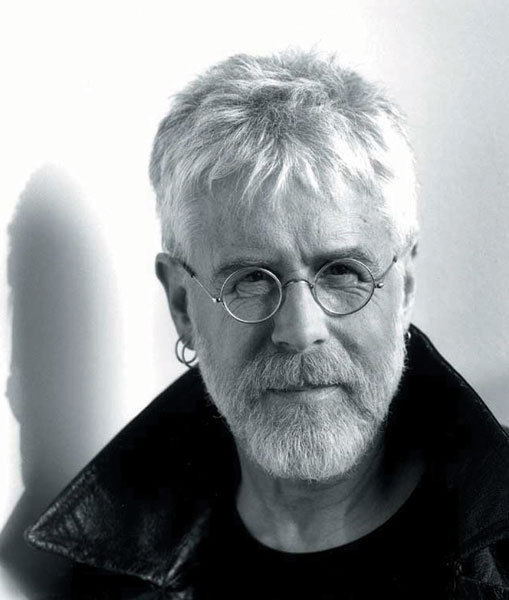




HAPPY BIRTHDAY to André 3000, Billy Adamson (The Searchers), Paul Bettany, Cilla Black, Dee Dee Bridgewater, Jimmy Castor Bunch’s 1972 “Troglodyte” single, Özgür Çevik, John Cheever, Harlan Ellison, Mal Evans, Joseph Fiennes, Neil Finn, The Golden Gate Bridge (1937), Lou Gossett, Jr., Dasheille Hammett, Wild Bill Hickok, Tony Hillerman, Hubert Humphrey, Sean Kinney, Peter Knight (Steeleye Span), Christopher Lee, Ramsey Lewis, Lisa “Left Eye” Lopes, Paul McCartney & Wings 1975 VENUS & MARS LP, Lee Meriweather, Thea Musgrave, music influencer Mondo Quinn, Vincent Price, Pete Sears, The Sex Pistols 1977 “God Save the Queen” single, Bud Shank, Siouxsie Sioux, Barry Vissell, my Most Excellent son-in-law Brian Walton, Blind Tom Wiggins, Don Williams, Herman Wouk, Chester Zardis, and renowned guitarist, singer-songwriter, spiritual apologist, human rights activist, and environmentalist Bruce Cockburn. He’s been at it a long time, with many awards and kudos to his name, but his music speaks louder than all of that—truly a man on a mission from God. His records have been in my life for many years, presenting me with intelligent spirituality and lyrical beauty that connects with the natural and the urban. Here’s a recent interview with Bruce to sum up his latest recording https://www.youtube.com/watch?v=I-nCfOUp6cU ...Meanwhile, HB BC—thank you for your volumes of music and service.
#brucecockburn #Canada #SanFrancisco #SanFranciscoLighthouse #christian #singersongwriter #activist
#johnny j blair#singer songwriter#music#san francisco#pop rock#Bruce Cockburn#Canada#San Francisco Lighthouse#Christian#activist
4 notes
·
View notes
Text
Armbruster — Can I Sit Here (Dear Life)

Violinist Conor Armbruster has shifted gears on Can I Sit Here. His previous release, Masses, reveled in the generous acoustics of an acoustic violin in a church sanctuary. On his latest for Dear Life, Can I Sit Here, the recording of an electric violin is close-miked and in mono, with many of the tracks using lots of distortion. Some electric violins have a number of extra strings that allow the performer to access a wider registral compass. That is certainly the case here. There is more use of drones too, as well as sounds inspired by heavy post-rock and even metal.
The leadoff track, “I’m Really Trying to Catch Up With You Soon,” bridges the gap between Masses and Can I Sit Here, with repetitions of organ-like sonorities wafting in the high register. Eventually, a thunderous, sustained bass register line enters as do treble register rock solos. The ostinato persists, creating a piece that, if only it had drums, would sound every bit like a piece by Godspeed You! Black Emperor. Indeed, in places one wishes that percussion, even electronic percussion, was incorporated.
“Playground” has a distorted repeating chord progression that registrally unfolds into a bold, bracing textural environment. It is nearly two thirds of the way through the piece that a rollicking solo is added. Shrieking “bird calls” arrive, as does dynamic intensity, the conclusion abandoning the chord progression for a sustained dissonant high note. In “Playground,” Mogwai seems like a touchstone. In fact, one could readily hear Armbruster touring in support of some of the aforementioned ensembles, heating up the crowd with searing strings.
“No Other News” features a constantly pulsating high note juxtaposed with bass strings in a wayward melody. The piece breaks into triplets against dovetailing melodies. Partway through, the ostinato from “Playground” makes a brief appearance, followed by bent bass notes and glissandos against the upper drone. It concludes with another repeated note in the low register and a swath of chords. “Lament” remains a chordal ostinato for most of its duration, until it goes sideways in a downward bend. “Thank You for Putting These Feelings Into Words” follows closely upon, with repeated spacy riffs providing the mood of a sci-fi soundtrack. Perhaps the catchiest among selections is “Tell the Crowd,” with a loping repeating bass-line and a solo that combines Americana and experimental music. “Can’t Wait To Be Chillin’” closes the album with a seven-minute work in which the violinist takes his time, with another bass ostinato and an alto register solo dovetailing alongside it. It is only near the end of the piece that Armbruster moves from a clean sound to distorted chordal slides. The close is a fragmented version of the ostinato, gradually fading.
The technical underpinning of Armbruster’s music is impressively assured and the sounds he explores are consistently interesting. Can I Sit Here makes me eager to hear what surprises he has up his sleeve for the future.
Christian Carey
#armbruster#can i sit here#dear life#christian carey#albumreview#dusted magazine#violin#electric violin#drones#post rock#metal
3 notes
·
View notes
Text
I need to talk about puy du fou, In Toledo, Spain. bc i went this year with my school and i nearly cried bc of how amazing it is.
ok, firstly, its a theme park (kinda) but instead of attraction there all shows of Spanish history such as el cantar del Mio Cid (el ultimo. cantar)(personal fav) or lope de Vega scaping the law while baing with a lot of women (pluma y espada) and other shows with birds or one that shows how one town converted to Christianism. THEY ARE ALL AMAZING. THEY EACH ONE HAVE A THING THAT MAKE THEM AMAZING, FOR INSTANCE, IN EL ULTIMO CANTAR, THE SCENARIO IS A CIRCUMFERENCE AND THE SEATS ROTATE TO CHANGE THE SCENARIO.
There was also a walk-through of a recration of one of Columbus ship´s, at one moment, it all moved to simulate the waves and I just wanted to cry bc of how well made it was
but without a doubt, the best show of all was the nigth one (which you have to pay more for it but is completly woth it, 1OO%) It tells the Spanish history from the middle ages, to Spain currently. some things they tell are, but not limited to: columbo arriving in Spain after getting to "Las Indias" (America), the Spanish civil war... it was all amazing.
The only thing I can complain about is that the actors didnt actually spoke, they had pre-recorded audio, but it´s the least of your concerns there.
one of my friends (which I think I like) almost didn´t went bc she went in october, she finally go to go and she decided to look at my face at some times bc she already saw it and she knows i love theater. Man i wish i could´ve seen my faces when in el ultimo cantar the seats moved.
and also, that trip was just, amazing, one of the best trip´s i´ve ever done, and I think that it´s mainly bc i went with friends. before going to puy du fou, we were a few hours the day before at Toledo city and wow, TOLEDO IS BEAUTIFUL. I LOVED THE FEW THINGS WE SAW, IT WAS ALL AWASOME. ITS BEAUTIFUL.
(also that when we were leaving puy du fou, me and the girl that i think I like were just talking about space, and she said "the moon looks lovely tonight" (for those who dont know thats a way of saying to someone that you like them) AND I COULD´VE SWORN WE ACTUALLY HAD A CONVERSATION ABOUT HOW IN KNY SHINOBU SAID THAT TO TOMIOKA, I KNOW SHE KNOWS WHAT DOES IT MEAN, SHE KNOWS I KNOWS WHAT DOES IT MEAN. WHAT I DONT KNOW IS IF SHE ACTUALLY MEANT IT THAT WAY OR MEANT IT LITTERALLY, anyway i said to her "yes it does " (bc it´s the way of saying yes). She hasn´t said anything that migth suggest that we´re something, but AAAAAAAA how am i supposed to do? Bc i know some things that migth suggest it appart from that (ex: one time she came to my house for dinner and her sister and her were having a stupid figth, more of a game figth type, and her sister said that she has the hair dyed. a few days after that, she just said to me "btw, I don´t have my hair dyed" and I didn´t even remembered back then that, so it may suggest that she overthinks it¿
aaaaaaaaaaaaaaaaaaaaaaasasssdaadasasasaddssfafsdafgsdafgsfafafafafagagagagagagagagagaagahahhghahghagagghagagzahghaghghgaaghg
#this escalated quickly#i just wanted to rant aout how good puy du fou is#its great honestly#YOU NEED TO GO#puy du fou#puy du fou Spain#puy du fou Toledo#Toledo Spain#Spain#Toledo#also toledo city is great#it has so much culture thanks to the 3 religions living together
1 note
·
View note
Text
Holidays 9.10
Holidays
Alexandra Asteroid Day
Alpaca Day
Amerindian Heritage Day (Guyana)
Blame It On the Large Hadron Collider Day
Children’s Day (Honduras)
Crayfish Day (French Republic)
Dia del Nino (Children’s Day; Honduras)
Festival of the Poets (Japan)
Godsall Day (Day of Rest in Southern Outer Tibet)
Grandparents’ & Family Caregivers’ Day (Florida)
Harvest Home Nibbling Contest (Gremlins)
Heritage Open Days begin (UK)
International Creepy Boston Dynamics Robotic Horse Day
International Gynaecological Awareness Day
International Make-Up Day
National Acid Attack Awareness Day (Nepal)
National American Indian/Alaska Native Hope for Life Day
National Anti-Junk Light Day
National Day (Gibraltar)
National Mamablogger Day (Netherlands)
National Sewerage Day (Japan)
National Stick a Fork Up Your Nose Day
910 Day
Old-Timers Day
Pandora Asteroid Day
Puyallup Fair begins (Washington)
St. George’s Caye Day (Belize)
Scape-Goat Day
Sew Be It Day (a.k.a. Sewing Machine Day)
Shower of Fish Day
Stop Junk Light Day
Swap Ideas Day
Take Goofy Pictures Day
Teacher's Day (China)
Top Up Day
White Balloon Day
World Suicide Prevention Day (UN)
X-Files Day
Food & Drink Celebrations
Buy a Regular Drink Day
Caramel Cheesecake Day
International Canned Cocktail Day
International Port Day
International Vegan Butterbeeer Day
National Hot Dog Day [also 3.30 & mid-July]
National TV Dinner Day
Independence & Related Days
Gibraltar National Day (Referendum of 1967)
Juclandia (Declared; 2001) [unrecognized]
Schwanensee (Declared; 2011) [unrecognized]
2nd Tuesday in September
Firearm Suicide Prevention Day [2nd Tuesday]
National Ants on a Log Day [2nd Tuesday]
Table Tennis Tuesday [2nd Tuesday of Each Month]
Taco Tuesday [Every Tuesday]
Target Tuesday [Every Tuesday]
Tater Tot Tuesday [Every Tuesday]
Tomato Tuesday [2nd Tuesday of Each Month]
Trivia Tuesday [Every Tuesday]
Two For Tuesday [Every Tuesday]
Weekly Holidays beginning September 10 (2nd Full Week of September)
National Suicide Prevention Week (thru 9.16) [Week of 9.10]
Festivals Beginning September 10, 2024
Harvest Music Festival (Fredericton, New Brunswick, Canada) [thru 9.15]
Husker Harvest Days (Grand Island, Nebraska) [thru 9.12]
National Heirloom Exposition (Ventura, California) [thru 9.12]
Patrick County Agricultural Fair (Stuart, Virginia) [thru 9.14]
Potato Bowl USA (Grand Forks, North Dakota) [thru 9.14]
Feast Days
Albatross Appreciation Day (Pastafarian)
Alexander Crummell (Episcopal Church)
Aubert (Christian; Saint)
Beryl Cook (Artology)
Beaverinne (Muppetism)
Carl Van Doren (Writerism)
Chico Day (Church of the SubGenius; Saint)
Chuseok (Korean Harvest Festival) [15th Day of 8th Lunar Moon]
Edmund James Peck (Anglican Church of Canada)
Finian of Moville (a.k.a. Winin; Christian; Saint)
Ganesh Chaturthi (Hinduism)
Georgia Douglas Johnson (Writerism)
Harvest Home Nibbling Contest (Gremlins; Shamanism)
Incense to Bring Clarity of Mind Day (Starza Pagan Book of Days)
Israel Abramofsky (Artology)
Karma Puja (Jharkhand, India)
Lope de Vega (Positivist; Saint)
Lorenzo Homar (Artology)
Marian Keyes (Writerism)
Marianne von Werefkin (Artology)
Mary Oliver (Writerism)
Media Aestas VIII (Pagan)
Nemesianus, Felix, Lucius, another Felix, Litteus, Polianus, Victor, Jader, and Dativus, Bishops and their companions (Christian; Martyrs)
Nicholas of Tolentino (Christian; Saint)
Pulcheria (Christian; Saint)
Salvius, Bishop of Albi (Christian; Saint)
Theodard of Maastricht (Christian; Saint)
Thomas Tsugi, Charles Spinola, and Great Martyrs of Nagasaki (Christian; Saint)
Lucky & Unlucky Days
Fatal Day (Pagan) [18 of 24]
Sakimake (先負 Japan) [Bad luck in the morning, good luck in the afternoon.]
Unglückstage (Unlucky Day; Pennsylvania Dutch) [23 of 30]
Premieres
Blue of Noon, by Georges Bataille (Novel; 1935)
Bullwinkle Takes the Wheel or The Bum Steer (Rocky & Bullwinkle Cartoon, S5, Ep. 212; 1963)
Brand New Day (a.k.a. Bran New Day; Film; 2010)
Buddha, Vol. 1: Kapilavastu, by Osamu Tezuka (Graphic Novel; 1972)
Cracked Ice (WB MM Cartoon; 1938)
Dollars and Sense (Money Rock Cartoon; Schoolhouse Rock; 1994)
Fresh Prince of Bel-Air (TV Series; 1990)
Gunsmoke (TV Show; 1955)
Hellraiser (Film; 1987)
It’s Garry Shandling’s Show (TV Series’ 1986)
Good Old Boys, by Randy Newman (Album; 1974)
The Joy Luck Club (Film; 1993)
King Neptune (Disney Cartoon; 1932)
The Lone Ranger (Animated Filmation TV Series; 1966)
My Little Pony (Animated TV Series; 2010)
Nightmare Alley,by William Lindsay Gresham (Novel; 1946)
The Orville (TV Series; 2017)
Our Song, by Taylor Swift (Song; 2007)
Pluto’s Fledgling (Disney Cartoon; 1948)
The Saint’s Getaway, by Leslie Charteris (Novel; 1933) [Saint #10]
Scooby-Doo! And the Spooky Scarecrow (WB Animated Film; 2013)
Smells Like Teen Spirit, by Nirvana (Song; 1991)
Southern Rhythm (Terrytoons Cartoon; 1932)
The Spirit of Seventy Sex (Adult Film; 1976)
Symphony No. 2, by Karl Amadeus Hartmann (Single Movement Symphony; 1950)
Test for Echo, by Rush (Album; 1996)
Thunderstruck, by AC/DC (Song; 1990)
The Tick (Animated TV Series; 1994)
Topsy Turvy or Emit Yvrut Yspot (Rocky & Bullwinkle Cartoon, S5, Ep. 211; 1963)
True Romance (Film; 1993)
2001: A Space Odyssey, by Arthur C. Clarke (Novel; 1968)
Who Is Harry Nilsson (And Why Is Everybody Talking’ About Him?) (Documentary Film; 2010)
The X-Files (TV Series; 1993)
You’re Too Careless with Your Kisses! (WB MM Cartoon; 1932)
Today’s Name Days
Carlo, Diethard, Isabella, Nikolaus (Austria)
Izabela, Nikola, Sebastijan (Croatia)
Irma (Czech Republic)
Buchardt (Denmark)
Lembe, Lembi, Lemme, Lemmi (Estonia)
Kaleva, Kalevi (Finland)
Inès (France)
Carlo, Diethard, Isabella, Niels (Germany)
Ersatz, Erastos, Kilmentini, Klimis, Minodora, Mitrodora, Nymfodora, Poulcgeria (Greece)
Hunor, Nikolett (Hungary)
Nicola (Italy)
Albertīne, Jausma (Latvia)
Girmintė, Konstancija, Kostė, Mikalojus, Tautgirdas (Lithuania)
Tor, Tord (Norway)
Aldona, Łukasz, Mikołaj, Mścibor, Pulcheria (Poland)
Oleg (Slovakia)
Nicolás (Spain)
Tord, Turid (Sweden)
Anabel, Annabel, Annabella, Annabelle, Arnie, Arnold, Arnolda, Arnoldo, Porter, Pulcheria (USA)
Today is Also…
Day of Year: Day 254 of 2024; 112 days remaining in the year
ISO: Day 2 of Week 37 of 2024
Celtic Tree Calendar: Muin (Vine) [Day 10 of 28]
Chinese: Month 8 (Guy-You), Day 8 (Ding-Chou)
Chinese Year of the: Dragon 4722 (until January 29, 2025) [Wu-Chen]
Hebrew: 7 Elul 5784
Islamic: 6 Rabi I 1446
J Cal: 14 Gold; Sevenday [14 of 30]
Julian: 28 August 2024
Moon: 50%: 1st Quarter
Positivist: 2 Shakespeare (10th Month) [Guillem de Castro]
Runic Half Month: Ken (Illumination) [Day 4 of 15]
Season: Summer (Day 83 of 94)
Week: 2nd Full Week of September
Zodiac: Virgo (Day 20 of 32)
1 note
·
View note
Text
Holidays 9.10
Holidays
Alexandra Asteroid Day
Alpaca Day
Amerindian Heritage Day (Guyana)
Blame It On the Large Hadron Collider Day
Children’s Day (Honduras)
Crayfish Day (French Republic)
Dia del Nino (Children’s Day; Honduras)
Festival of the Poets (Japan)
Godsall Day (Day of Rest in Southern Outer Tibet)
Grandparents’ & Family Caregivers’ Day (Florida)
Harvest Home Nibbling Contest (Gremlins)
Heritage Open Days begin (UK)
International Creepy Boston Dynamics Robotic Horse Day
International Gynaecological Awareness Day
International Make-Up Day
National Acid Attack Awareness Day (Nepal)
National American Indian/Alaska Native Hope for Life Day
National Anti-Junk Light Day
National Day (Gibraltar)
National Mamablogger Day (Netherlands)
National Sewerage Day (Japan)
National Stick a Fork Up Your Nose Day
910 Day
Old-Timers Day
Pandora Asteroid Day
Puyallup Fair begins (Washington)
St. George’s Caye Day (Belize)
Scape-Goat Day
Sew Be It Day (a.k.a. Sewing Machine Day)
Shower of Fish Day
Stop Junk Light Day
Swap Ideas Day
Take Goofy Pictures Day
Teacher's Day (China)
Top Up Day
White Balloon Day
World Suicide Prevention Day (UN)
X-Files Day
Food & Drink Celebrations
Buy a Regular Drink Day
Caramel Cheesecake Day
International Canned Cocktail Day
International Port Day
International Vegan Butterbeeer Day
National Hot Dog Day [also 3.30 & mid-July]
National TV Dinner Day
Independence & Related Days
Gibraltar National Day (Referendum of 1967)
Juclandia (Declared; 2001) [unrecognized]
Schwanensee (Declared; 2011) [unrecognized]
2nd Tuesday in September
Firearm Suicide Prevention Day [2nd Tuesday]
National Ants on a Log Day [2nd Tuesday]
Table Tennis Tuesday [2nd Tuesday of Each Month]
Taco Tuesday [Every Tuesday]
Target Tuesday [Every Tuesday]
Tater Tot Tuesday [Every Tuesday]
Tomato Tuesday [2nd Tuesday of Each Month]
Trivia Tuesday [Every Tuesday]
Two For Tuesday [Every Tuesday]
Weekly Holidays beginning September 10 (2nd Full Week of September)
National Suicide Prevention Week (thru 9.16) [Week of 9.10]
Festivals Beginning September 10, 2024
Harvest Music Festival (Fredericton, New Brunswick, Canada) [thru 9.15]
Husker Harvest Days (Grand Island, Nebraska) [thru 9.12]
National Heirloom Exposition (Ventura, California) [thru 9.12]
Patrick County Agricultural Fair (Stuart, Virginia) [thru 9.14]
Potato Bowl USA (Grand Forks, North Dakota) [thru 9.14]
Feast Days
Albatross Appreciation Day (Pastafarian)
Alexander Crummell (Episcopal Church)
Aubert (Christian; Saint)
Beryl Cook (Artology)
Beaverinne (Muppetism)
Carl Van Doren (Writerism)
Chico Day (Church of the SubGenius; Saint)
Chuseok (Korean Harvest Festival) [15th Day of 8th Lunar Moon]
Edmund James Peck (Anglican Church of Canada)
Finian of Moville (a.k.a. Winin; Christian; Saint)
Ganesh Chaturthi (Hinduism)
Georgia Douglas Johnson (Writerism)
Harvest Home Nibbling Contest (Gremlins; Shamanism)
Incense to Bring Clarity of Mind Day (Starza Pagan Book of Days)
Israel Abramofsky (Artology)
Karma Puja (Jharkhand, India)
Lope de Vega (Positivist; Saint)
Lorenzo Homar (Artology)
Marian Keyes (Writerism)
Marianne von Werefkin (Artology)
Mary Oliver (Writerism)
Media Aestas VIII (Pagan)
Nemesianus, Felix, Lucius, another Felix, Litteus, Polianus, Victor, Jader, and Dativus, Bishops and their companions (Christian; Martyrs)
Nicholas of Tolentino (Christian; Saint)
Pulcheria (Christian; Saint)
Salvius, Bishop of Albi (Christian; Saint)
Theodard of Maastricht (Christian; Saint)
Thomas Tsugi, Charles Spinola, and Great Martyrs of Nagasaki (Christian; Saint)
Lucky & Unlucky Days
Fatal Day (Pagan) [18 of 24]
Sakimake (先負 Japan) [Bad luck in the morning, good luck in the afternoon.]
Unglückstage (Unlucky Day; Pennsylvania Dutch) [23 of 30]
Premieres
Blue of Noon, by Georges Bataille (Novel; 1935)
Bullwinkle Takes the Wheel or The Bum Steer (Rocky & Bullwinkle Cartoon, S5, Ep. 212; 1963)
Brand New Day (a.k.a. Bran New Day; Film; 2010)
Buddha, Vol. 1: Kapilavastu, by Osamu Tezuka (Graphic Novel; 1972)
Cracked Ice (WB MM Cartoon; 1938)
Dollars and Sense (Money Rock Cartoon; Schoolhouse Rock; 1994)
Fresh Prince of Bel-Air (TV Series; 1990)
Gunsmoke (TV Show; 1955)
Hellraiser (Film; 1987)
It’s Garry Shandling’s Show (TV Series’ 1986)
Good Old Boys, by Randy Newman (Album; 1974)
The Joy Luck Club (Film; 1993)
King Neptune (Disney Cartoon; 1932)
The Lone Ranger (Animated Filmation TV Series; 1966)
My Little Pony (Animated TV Series; 2010)
Nightmare Alley,by William Lindsay Gresham (Novel; 1946)
The Orville (TV Series; 2017)
Our Song, by Taylor Swift (Song; 2007)
Pluto’s Fledgling (Disney Cartoon; 1948)
The Saint’s Getaway, by Leslie Charteris (Novel; 1933) [Saint #10]
Scooby-Doo! And the Spooky Scarecrow (WB Animated Film; 2013)
Smells Like Teen Spirit, by Nirvana (Song; 1991)
Southern Rhythm (Terrytoons Cartoon; 1932)
The Spirit of Seventy Sex (Adult Film; 1976)
Symphony No. 2, by Karl Amadeus Hartmann (Single Movement Symphony; 1950)
Test for Echo, by Rush (Album; 1996)
Thunderstruck, by AC/DC (Song; 1990)
The Tick (Animated TV Series; 1994)
Topsy Turvy or Emit Yvrut Yspot (Rocky & Bullwinkle Cartoon, S5, Ep. 211; 1963)
True Romance (Film; 1993)
2001: A Space Odyssey, by Arthur C. Clarke (Novel; 1968)
Who Is Harry Nilsson (And Why Is Everybody Talking’ About Him?) (Documentary Film; 2010)
The X-Files (TV Series; 1993)
You’re Too Careless with Your Kisses! (WB MM Cartoon; 1932)
Today’s Name Days
Carlo, Diethard, Isabella, Nikolaus (Austria)
Izabela, Nikola, Sebastijan (Croatia)
Irma (Czech Republic)
Buchardt (Denmark)
Lembe, Lembi, Lemme, Lemmi (Estonia)
Kaleva, Kalevi (Finland)
Inès (France)
Carlo, Diethard, Isabella, Niels (Germany)
Ersatz, Erastos, Kilmentini, Klimis, Minodora, Mitrodora, Nymfodora, Poulcgeria (Greece)
Hunor, Nikolett (Hungary)
Nicola (Italy)
Albertīne, Jausma (Latvia)
Girmintė, Konstancija, Kostė, Mikalojus, Tautgirdas (Lithuania)
Tor, Tord (Norway)
Aldona, Łukasz, Mikołaj, Mścibor, Pulcheria (Poland)
Oleg (Slovakia)
Nicolás (Spain)
Tord, Turid (Sweden)
Anabel, Annabel, Annabella, Annabelle, Arnie, Arnold, Arnolda, Arnoldo, Porter, Pulcheria (USA)
Today is Also…
Day of Year: Day 254 of 2024; 112 days remaining in the year
ISO: Day 2 of Week 37 of 2024
Celtic Tree Calendar: Muin (Vine) [Day 10 of 28]
Chinese: Month 8 (Guy-You), Day 8 (Ding-Chou)
Chinese Year of the: Dragon 4722 (until January 29, 2025) [Wu-Chen]
Hebrew: 7 Elul 5784
Islamic: 6 Rabi I 1446
J Cal: 14 Gold; Sevenday [14 of 30]
Julian: 28 August 2024
Moon: 50%: 1st Quarter
Positivist: 2 Shakespeare (10th Month) [Guillem de Castro]
Runic Half Month: Ken (Illumination) [Day 4 of 15]
Season: Summer (Day 83 of 94)
Week: 2nd Full Week of September
Zodiac: Virgo (Day 20 of 32)
1 note
·
View note
Text
Mashpee tribe's baby boom is opportunity for training, organizers say
Our religions, our languages, our history, our lands, our independence, our lives have been changed since colonization started here and we are still paying the price. No humans on earth should have treated innocent people this way just because they don't know anything about your Christian religion.
Our people were slaughtered like wild animals including our precious babies who were born in the wrong time. No god would allow this if there was such a god. It's really the people who made themselves gods over everything that we held sacred and now these same people are still doing what their ancestors did because they truly believe in their sick and wicked minds that they did us a favor, I wonder if we did the exact same thing to them, if they would say that we did them a good service?
0 notes
Text
All Them Witches + Jesus The Snake: o duplo antídoto perfeito para curar a ressaca do São João | Reportagem Completa

Charles Michael Parks Jr., o vocalista dos All Them Witches | mais fotos clicar aqui
A banda All Them Witches esteve no nosso país neste mês de junho para dois concertos. Realizaram-se, respetivamente, na capital lusitana no Lisboa Ao Vivo (23/06) e Porto no mítico Hard Club (24/06) na sala principal. Marcamos presença nesta segunda performance ocorrida a norte. Ambos os concertos foram organizados pela Garboyl Lives, a entidade responsável pelo SonicBlast Fest. Estes concertos tiveram lotações praticamente esgotadas.
Deste modo a banda norte-americana regressou a Portugal depois de ter atuado no Sonic Blast em Moledo em 2016 e mais recentemente em 2019 na Sala Tejo em Lisboa num evento no qual o headLiner da noite foram os suecos Ghost, banda liderada pelo vocalista Tobias Forge.

João Costa, o baterista dos Jesus The Snake | mais fotos clicar aqui
Antes de desenvolvermos um pouco mais sobre a atuação dos All Them Witches (ATW), vamos abordar a performance da banda de abertura: os Jesus The Snake. Este projeto lusitano é oriundo de Vizela com uma veia vianense nas teclas. A sua formação é composta pelo Jorge Lopes (guitarra), Gonçalo Palmas (teclas), Rui Silva (baixo) e João Costa (bateria). A este quarteto juntou-se Kevin Pires, músico que fez parte de projetos como Astrodome e Mother Jupiter, nos teclados e sintetizadores. Agora a banda prosseguirá a cinco.
A sua sonoridade assenta no stoner psicadélico dos anos 70 do século passado. A própria banda descreve o seu som como sendo “um rock instrumental, psicadélico e progressivo”.

Jorge Lopes dos Jesus The Snake imensamente concentrado | mais fotos clicar aqui De forma surpreendente e até inesperada os Jesus The Snake foram convidados pela organização para tocarem nas primeiras partes em ambas as metrópoles. Praticamente 2 anos depois das últimas performances. Apesar de não terem tido muito tempo, conseguiram ensaiar o suficiente para uma participação vigorosa. Recuperaram alguns temas de ‘Black Acid, Pink Rain’, álbum editado em 2019. Interpretaram, por exemplo, a faixa que dá nome a este disco, “Floyds II” e “Duna” com versões adaptadas para encaixarem no slot temporal disponível.
Ainda mostraram alguns temas fresquinhos do tipo “pãezinhos quentes”. Estas composições são bastante recentes e serão integradas num álbum novo, a ser editado a médio prazo. A banda está a preparar as gravações e mais novidades são esperadas a qualquer momento.

Rui Silva dos Jesus The Snake com garra | mais fotos clicar aqui As atuações dos ATW já não contam com o baterista Robby Staebler. A banda anunciou em abril deste ano a sua saída. Christian Powers dos Fortune Child foi o músico assegurado para esta rápida tournée europeia terminada no dia 29 de junho no festival Tons Of Rock em Oslo. O guitarrista Ben McLeod, o vocalista e baixista Charles Michael Parks Jr. e o teclista Allan Van agora são o núcleo duro deste projeto.
Esta formação rockeira, com múltiplas influências de géneros rock: do hard ao psicadélico, existe desde 2012 e tem por base a cidade de Nashville no Tennessee. Os All Them Witches têm dado muito bem conta de si com um repertório profícuo, entre LPs, EPs e álbuns ao vivo.

Ben McLeod dos All Them Witches | mais fotos clicar aqui
‘Nothing As The Ideal’ é o mais recente longa-duração, cuja edição ocorreu em 2020. Deste álbum tocaram “See You Next Fall” logo na abertura e “Enemy of My Enemy”. Outros temas significativos que os All Them Witches também interpretaram: "Diamond", "The Marriage of Coyote Woman", “Alabaster” ou “Charles William”. Fácil constatar que percorreram um pouco da sua discografia desde 2016.
A verdade é que apesar de ser a noite de ressaca da festa mais importante da Cidade Invicta, o São João, o Hard Club não só encheu para receber os All Them Witches, como vibrou ao longo de todo o concerto. É verdade que a performance, praticamente imaculada da banda, contribuiu e muito para que essa entrega do público se fizesse sentir. Há que destacar aqueles solos divinos de Ben McLeod que fizeram estremecer, por várias vezes, as fundações da sala principal e os corações de todos nós. Que bela forma de curar a ressaca!

Allan Van, o teclista dos All Them Witches | mais fotos clicar aqui A promotora Garboyl Lives com toda a certeza, proporcionará mais momentos incríveis nos próximos meses como estes vividos nesta noite portuense. Um dos momentos áureos será, pois claro, o SonicBlast Fest marcado para os dias 8, 9 e 10 de Agosto 2024 na Praia da Duna do Caldeirões em Âncora.
Reportagem fotográfica completa: Clicar Aqui

All Them Witches ao vivo no Hard Club | mais fotos clicar aqui
Texto: Edgar Silva (com texto genérico de apoio) e Jorge Resende Fotografia: Jorge Resende
0 notes